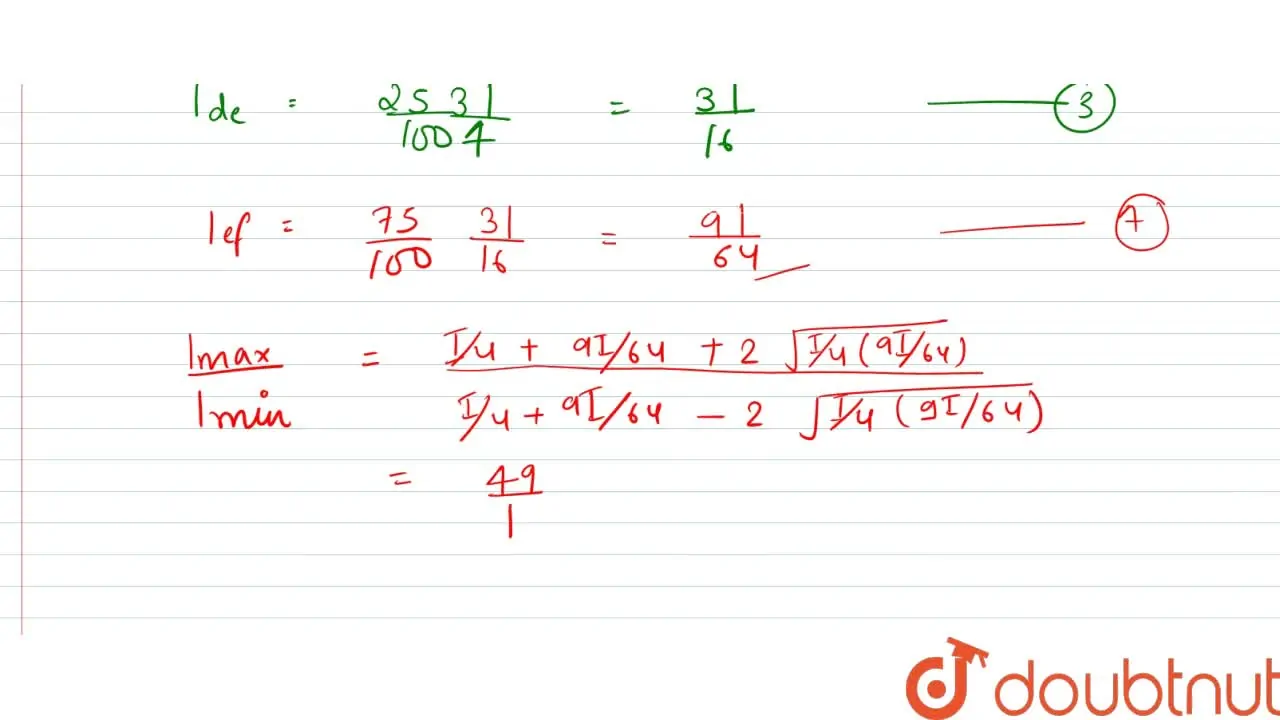A narrow monochromatic beam of light of intensity 1 is incident on a glass plate as shown in figure Another identical glass plate is kept close to the first one and parallel to it. Each glass plate reflects of the light incident on it and transmits intensities in the interference pattern formed by two beams obtained after one reflection at each plate.
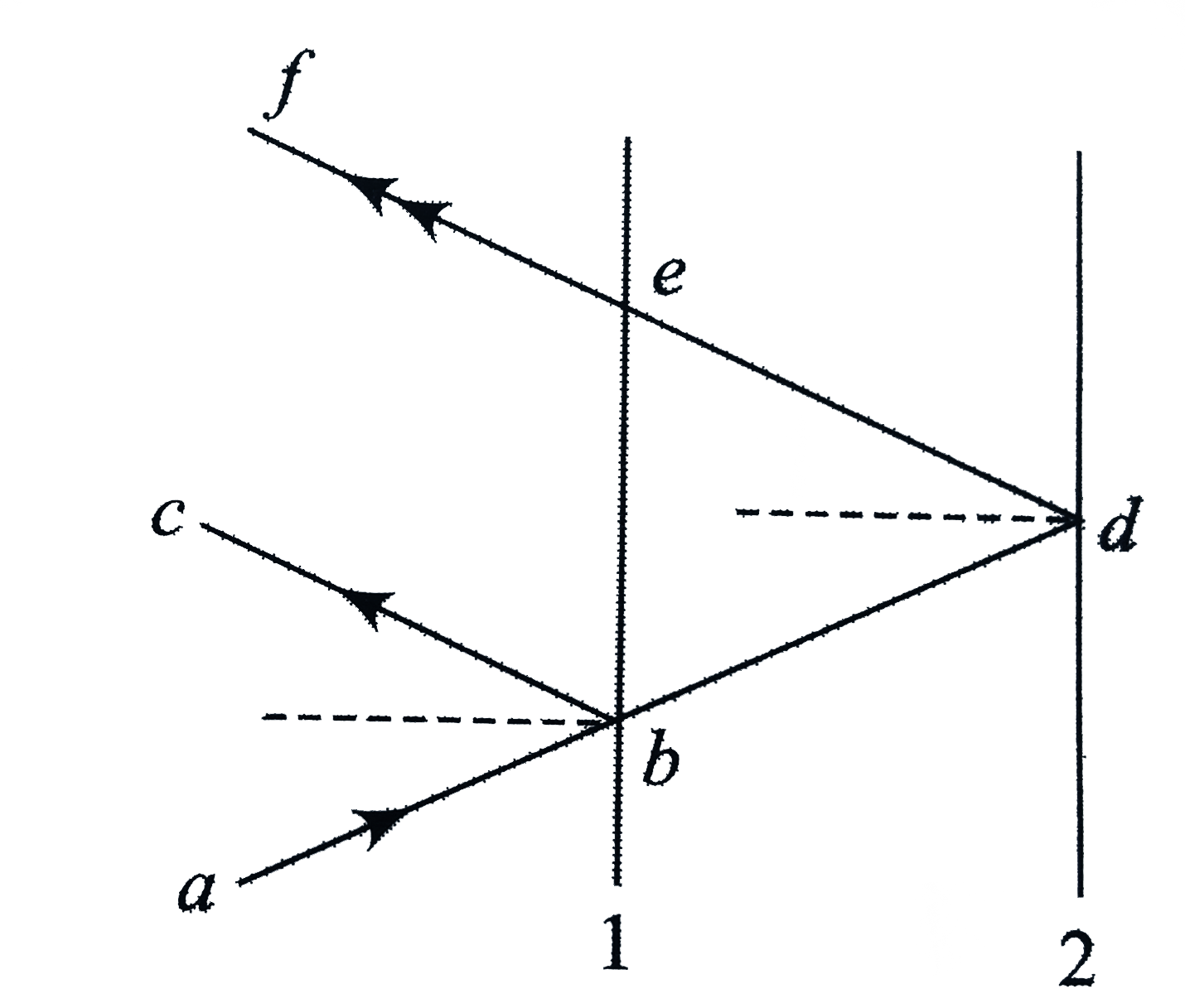
is the intensity of incident beam ab. The interfering waves. Are bc and ef, reflected from surface of plates 1 and 2, respectively.
Reflectoin coefficient of intensity
Transmission coefficient of intensity,
The intensity of beam bc,
The intensity of beam
The intensity of beam
The intensity of beam ef,
Ratio of maximum and minimum intensities,
.
Related Playlists
- BOOK - CENGAGE PHYSICS ENGLISHCHAPTER - WAVE OPTICSEXERCISE - Exercise 2.112videos
WAVE OPTICS
- BOOK - CENGAGE PHYSICS ENGLISHCHAPTER - WAVE OPTICSEXERCISE - Exercise 2.222videos
WAVE OPTICS
- BOOK - CENGAGE PHYSICS ENGLISHCHAPTER - WAVE OPTICSEXERCISE - Comprehension Type14videos
WAVE OPTICS
- BOOK - CENGAGE PHYSICS ENGLISHCHAPTER - SOURCES OF MAGNETIC FIELDEXERCISE - single correct Ansewer type12videos
SOURCES OF MAGNETIC FIELD
Similar Questions
_E01_107_Q01.png)
A narrow monochromatic beam of light of intensity I is incident on a galss plate as shown in figure. Another identical glass plate is kept close to the first one & parallel to it. Each glass plate reflects 25% of the light incident on it % transmits the remaining find the ratio of the minimum & the maximum intensities in the interference pattern formed by the two beams obtained after one reflection at each plate.View SolutionA ray of light intensity I is incident on a parallel glass-slab at a point A as shown in figure. It undergoes partial reflection and refraction. At each reflection 25% of incident energy is reflected. The rays AB and A′B′ undergo interference. The ratio Imax/Imin is
 View Solution
View SolutionA ray of light of intensity I is incident on a parallel glass-slab at the point A and it undergoes partial reflection and refraction as shown in the figure. At each reflection 25% of the incident energy is reflected and the rest is transmitted. If the rays AB and A'B' undergo interference, then the ratio ImaxImin is
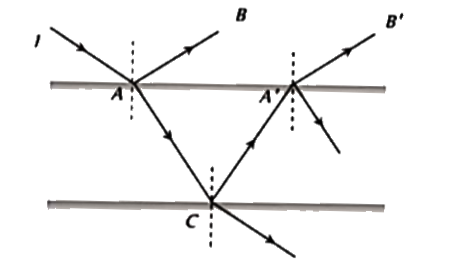 View Solution
View SolutionA ray of monochromatic light is incident from air on a glass slab.
Name the two rays that are parallel to each other.View SolutionA parallel beam of light of intensity I is incident on a glass plate. 25% of light is reflected in any reflection by upper surface and 50% of light is reflected by any reflection from lower surface. Rest is refracted The ratio of maximum to minimum intensity in interference region of reflected rays is
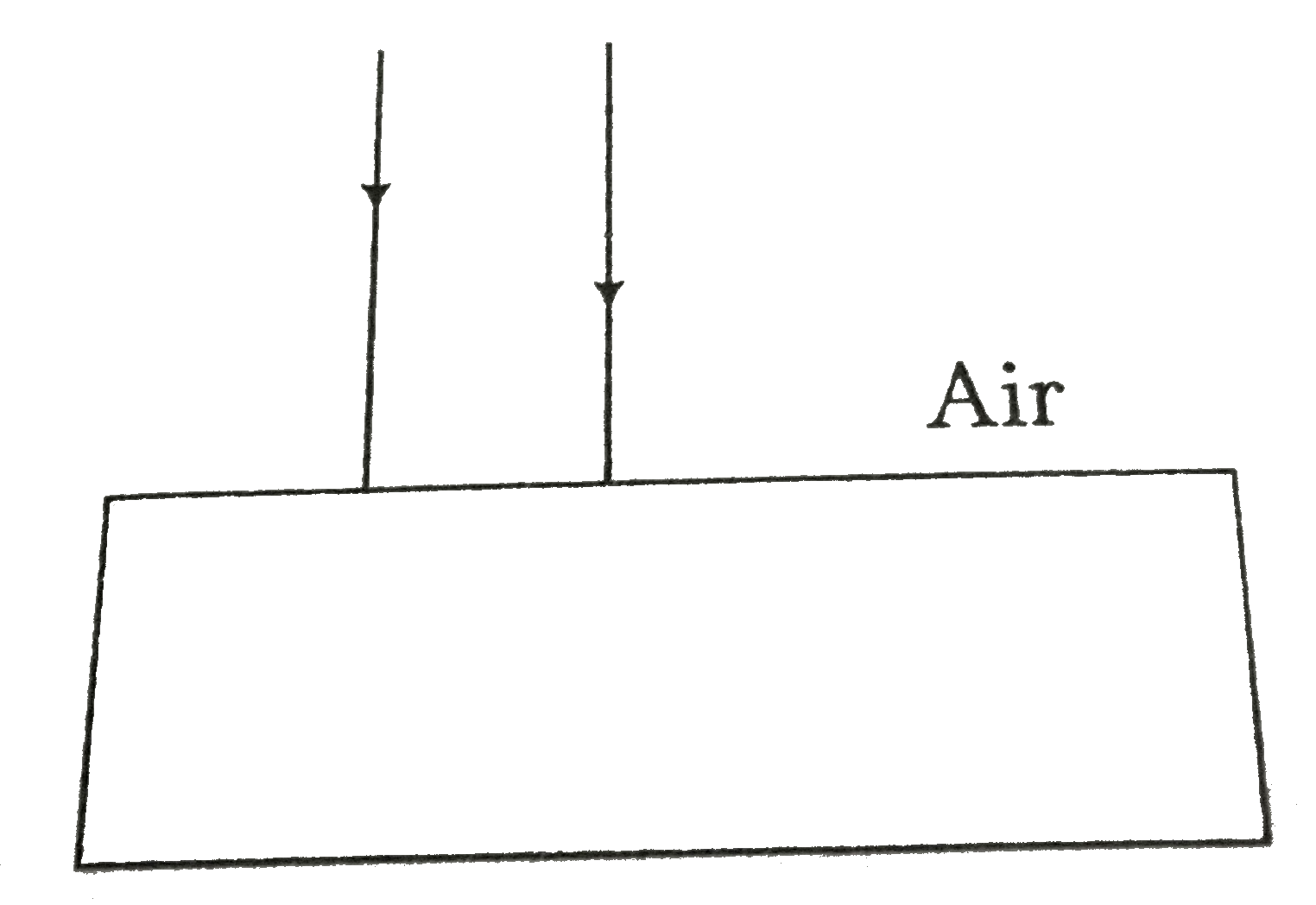 View Solution
View SolutionA ray of light in incident on a glass plate at an angle of 60∘. What is the refractive index of glass if the reflected and refracted rays are perpendicular to each other?
View SolutionA certain monochromatic light travelling in air is incident on a glass plate at a polarising angle. Angle of refraction in glass is found to be 32∘ Calculate :
(i) the polarising angle,
(ii) refractive index of glass.View SolutionA beam of light is incident at the polarizing angle of 35∘ on a certain glass plate. The refractive index of the glass plate is:
View SolutionA plate is kept in front of a beam of photons. The plate reflects 40% of the incident photons and absorbs the remainder. If the plate absorbs energy at a rate 1200J−1s, find the net force acting on it.
View SolutionA ray of light incident from air on a glass plate of refractive index n is partly reflected and partly refracted at the two surfaces of the glass. The displacement y0 in the figure is
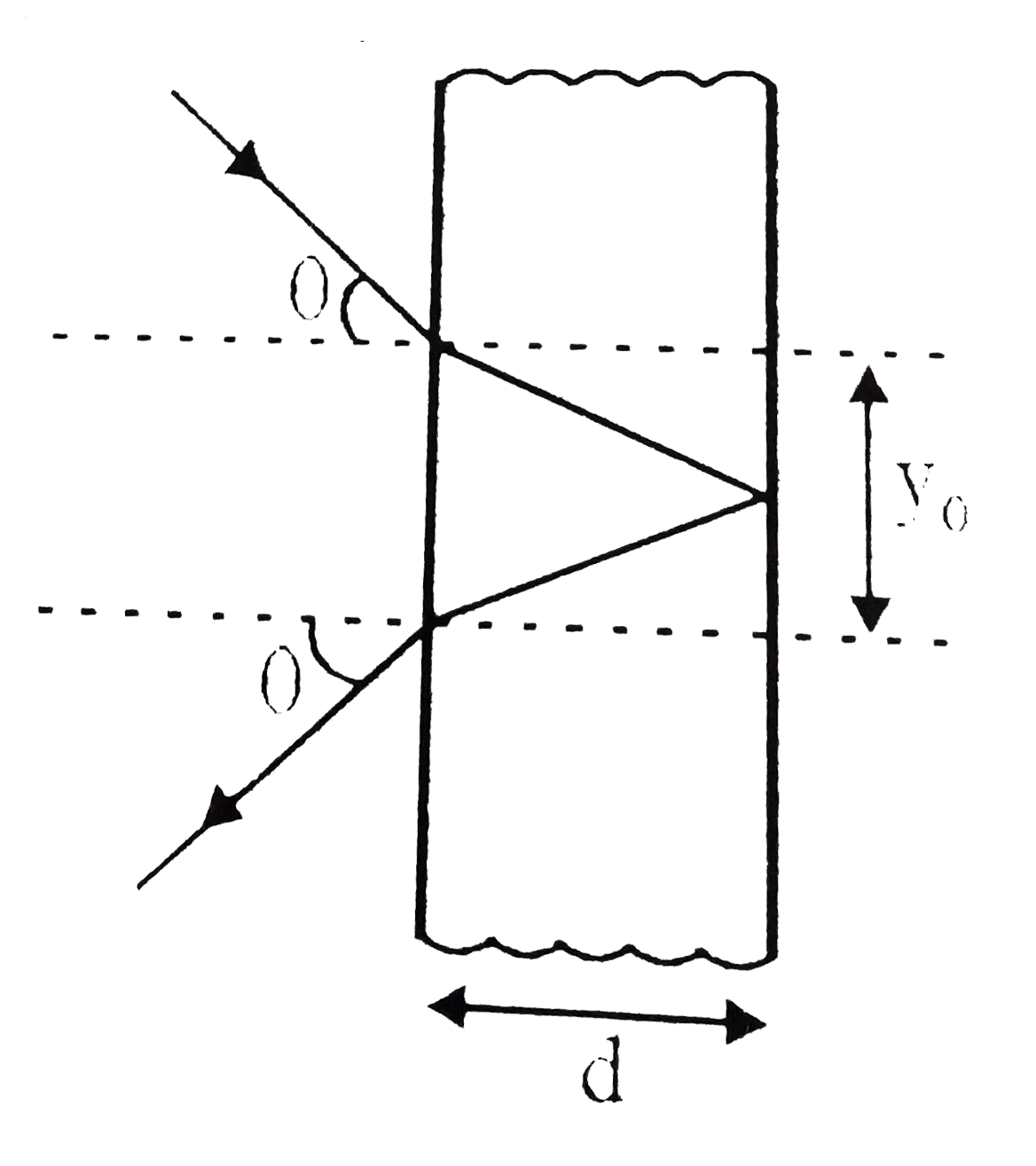 View Solution
View Solution

